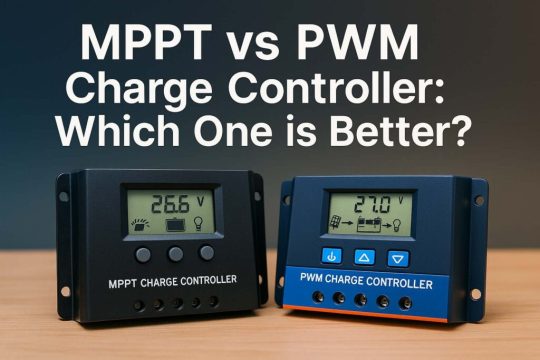#SolarPowerComponents
Explore tagged Tumblr posts
Text
MPPT vs PWM Charge Controller: Which One is Better?
In the world of solar power, the charge controller plays a crucial role in ensuring your batteries are charged efficiently and safely. Two main types dominate the market—MPPT (Maximum Power Point Tracking) and PWM (Pulse Width Modulation). If you're setting up a solar system or upgrading an existing one, the big question is: MPPT vs PWM Charge Controller — which one is better?

MPPT vs PWM Charge Controller: Which One is Better? This article explores that question in depth. We'll examine how each controller works, their pros and cons, and help you decide which one suits your solar project best.
Understanding the Basics: MPPT vs PWM Charge Controller
Before we dive into comparisons, it's important to understand what each type of controller does. What is a PWM Charge Controller? A PWM charge controller is the older and simpler of the two technologies. It works by connecting the solar panel directly to the battery, then rapidly switching the current on and off to maintain the battery voltage. While effective, it has a key limitation—it cannot adjust the voltage from the solar panel. If your panel is producing more voltage than the battery needs, the extra energy is wasted. This makes PWM controllers less efficient, especially in large or cold-climate systems where panels can operate at higher voltages. Know more about Solar System Sizing Calculator for Agriculture & Tubewells What is an MPPT Charge Controller? MPPT controllers are more advanced. They constantly track the maximum power point of the solar panel. This allows them to convert excess voltage into usable current. In simple terms, they "squeeze" more energy out of your solar panels. This feature is especially useful when your solar array voltage is significantly higher than your battery bank. MPPT controllers ensure minimal energy loss during the charging process.
Key Differences: MPPT vs PWM Charge Controller
Here’s a technical comparison of both types of charge controllers: FeaturePWM Charge ControllerMPPT Charge ControllerEfficiency70% – 80% – 99%Voltage RegulationNo voltage step-downSteps down voltage efficientlyIdeal Panel VoltageClose to battery voltageCan be much higher than batterySystem CostLowerHigherUse in Cold WeatherLess effectivePerforms betterSuitable for Large SystemsNoYesCharging SpeedSlowerFasterComplexitySimpleMore advanced Know more about Battery Energy Storage System Design and ROI
Efficiency Comparison: MPPT vs PWM Charge Controller
Efficiency is the biggest factor when comparing MPPT vs PWM charge controller. A PWM controller simply reduces the panel voltage to match the battery. Let’s say your solar panel outputs 18V and your battery is 12V. The PWM controller drops that extra 6V, wasting energy. On the other hand, an MPPT controller converts the 18V to 12V and increases the current accordingly. So if your panel is delivering 5 amps at 18V (90 watts), the MPPT controller will adjust the output to around 7.5 amps at 12V, maintaining almost all 90 watts. That means MPPT controllers can provide up to 30% more energy to the battery, especially during peak sun hours or colder temperatures when panels operate more efficiently.
Cost Consideration: Is MPPT Worth the Extra Price?
MPPT controllers are more expensive than PWM controllers. But that doesn’t necessarily mean they’re not cost-effective. For small systems or budget installations where panel voltage matches battery voltage, PWM may be fine. But if you’re investing in a mid- to large-size system, the extra power captured by MPPT can outweigh its upfront cost over time. Think of it this way: if your system generates 20% more energy daily with an MPPT controller, it reduces your need for extra panels or batteries. Know more about How to Calculate Solar Plant Efficiency in 5 Steps Read the full article
#EnergyOptimization#MPPTChargeController#OffGridSystems#PWMChargeController#RenewableEnergyGuide#SolarBatteryCharging#SolarChargeControllerTypes#SolarPanelAccessories#SolarPowerComponents#SolarSystemEfficiency
0 notes